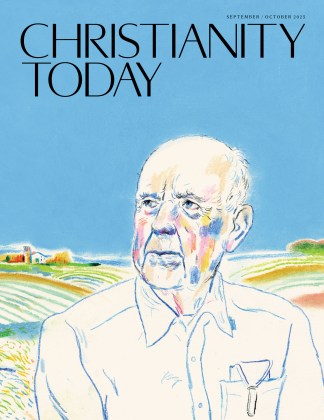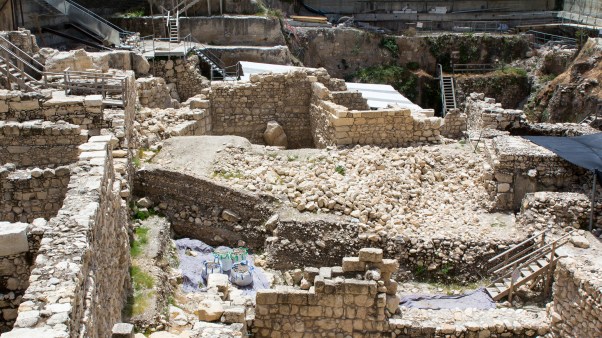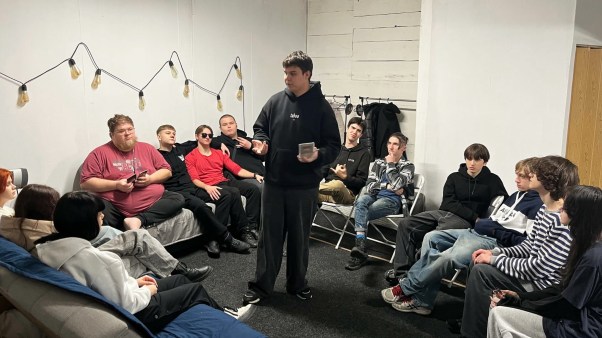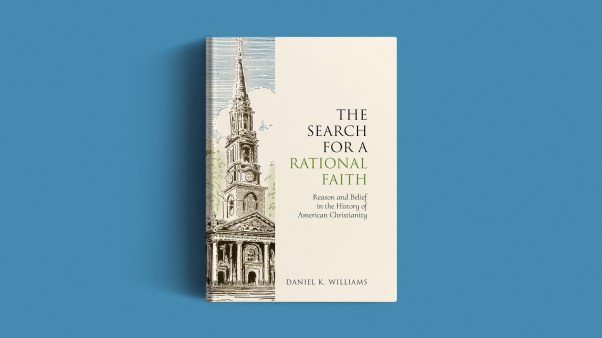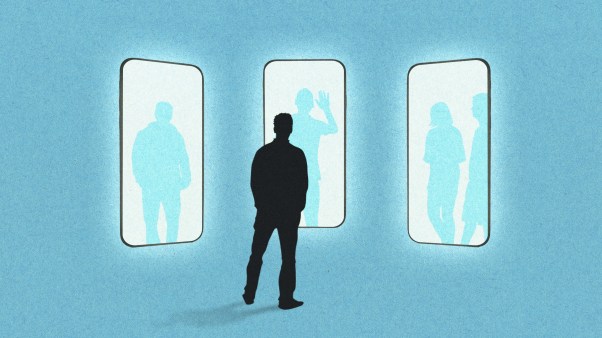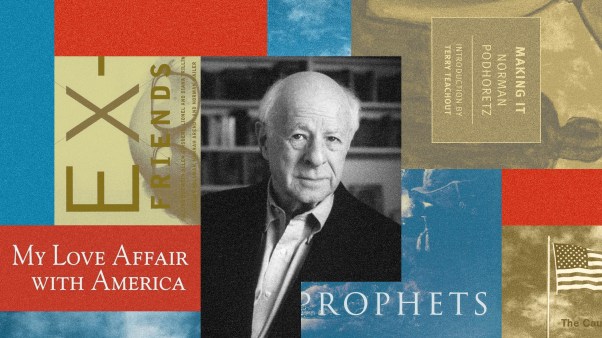My good friend Emma is a deeply committed Christian who lives with cerebral palsy. Recently she went to a church she had not visited before. As she was leaving, an elder approached her and asked, “Can I pray for you?” She replied, “Why would you want to do that?” He said, “I feel that Jesus wants to free you from your disability.”
Emma’s response was calm but firm: “I’m happy as I am, thank you.” She left the church with dignity, but she was really upset. “Every time that happens, it makes me feel like I don’t belong in church,” she told me. “It’s like people think I’m less than everyone else. But I’m not, right?” A tear rolled down her cheek.
My friend’s experience lays bare a theological fault line Christians must confront: When the church sees disability solely as something to be fixed rather than something that can be honored and received, it obscures the truth of creation’s goodness and distorts the image of God.
The term disability is both theologically and culturally contested. For some, like the elder who presumed to pray away Emma’s cerebral palsy, it signifies only a defect—something in the body or mind that has gone wrong and needs to be fixed. This deficit model treats disability as an aberration from an assumed norm of bodily or cognitive integrity and reinforces disability as the primary part of a person’s identity.
Others argue that a good deal of disability lies within society and not within the individual. In this view, a wheelchair user, though impaired in mobility, is rendered disabled when people build stairs instead of ramps or withhold community on the grounds of bodily deviation.
Disability is not simply a condition; it is also a relation. Disability can be both a site of divine image-bearing and a context of genuine struggle. I believe it is possible to honor the goodness of disabled lives without denying the fragility they may carry.
To do so, we must begin with Creation itself. The key question is not simply whether disability is good or bad, but what kind of world we believe God has made—and what it means to belong within it.
Some of our errors in theology around disability stem from a reading of the Genesis creation narrative that idealizes Adam and Eve as perfect examples of human beings. The implication is that there was no disability in the Garden of Eden and therefore disability must have arisen after the Fall.
Within this reading, we can start to think of Eden as a flawless realm, untouched by struggle or dependency—a vision of harmony in which disruption, limitation, and fragility are cast as intrusions. Bodily or cognitive differences are viewed solely through the lens of departures from divine design.
But there is another way to interpret the Genesis account of creation, a way that sees the goodness of creation in a different light.
Let’s begin with the suggestion that the original state of the world was one of perfection. Although some default to this language when interpreting the Genesis creation narratives, the text itself never uses this term. While Eden was originally untainted by sin, the Bible does not suggest that creation was perfect in the sense of flawlessness or static idealism.
Instead, the divine pronouncement is that the creation is good (tov in Hebrew). This word, in its biblical and theological context, does not imply perfection or uniformity but denotes relational integrity, aesthetic richness, diversity, and the capacity for fruitful, dynamic life and connection.
The theological grammar of Genesis is thus relational rather than idealistic. The goodness of creation is not grounded in metaphysical perfection but in the dynamics between Creator and creation, and among created beings themselves. Eden is a world of movement, interdependence, vulnerability, and growth. It is, in short, a world that includes the possibility of difference and dependence as intrinsic to its goodness. This reframing of Genesis as a story of dynamic goodness rather than static perfection compels us to revisit its embedded theological anthropology.
If Eden’s goodness lies in its interrelational depth rather than its metaphysical flawlessness, then the human vocation must likewise be understood in relational rather than idealized terms. The move from a general depiction of creation’s goodness to the particular creation of humanity (Gen. 1:27–31) signals not a break but an intensification of this theme.
Diversity of form, function, and even capacity is not a deviation from divine intent but a constitutive feature of it. Genesis 1 is not concerned with perfection as sameness but with a flourishing ecology of difference. The opening chapter of Genesis celebrates a creation teeming with life: light and dark, sky and sea, birds, fish, and finally human beings, uniquely made in the image of God.
Thus, humanity’s imaging of God is rooted not in perfectionistic traits like rational mastery or autonomy but in the divine capacity for relation, response, and care.
While the imago Dei has sometimes been defined in terms of intellect, rationality, or physical capacity, this view inevitably excludes those with profound intellectual disabilities or those living with dementia, whose capacities are either undeveloped or diminishing. But the problem runs deeper: If the image is equated with cognitive or physical function, then all human beings are, in effect, growing out of that image as we age and our bodies and minds decline. This renders the imago Dei not a gift bestowed but a status to be lost, an anthropology that is both theologically incoherent and pastorally troubling.
There is another way to think about the image of God. God’s Spirit (ruach) sustains all living creatures, including animals (Gen. 7:15; Ps. 104:27–30). What distinguishes humans is God’s desire to relate to them (Gen. 1:26–28). The imago Dei is manifested in God’s loving gift of relationality. What distinguishes humanity is not superior functionality but God’s relational intent. God speaks with human beings, entrusts them with responsibility, and desires communion with them in a way not extended to other creatures. The imago Dei is a gift, not a human capacity.
Some might challenge the inclusivity of this view by arguing that relationality requires reciprocity, asking, “If you can’t respond to God’s gift, then how can you receive it?” Once again, Genesis has a reply.
In the second creation account, in Genesis 2, humans are called to care for the world—to tend, to keep, and to sustain it (v. 15). If caring for the world and all its creatures is a foundational human vocation, then we as creatures are counted among those who also need to receive care. If you find yourself in a situation where you can only be cared for, where you cannot respond to others and to God, this does not mean you are somehow a lesser portrayal of the image of God.
This vision of the image of God as a relational gift rather than a functional capacity opens the door to a more profound understanding of humanness. If Genesis 1 affirms that difference and dependence do not preclude divine image-bearing, then Genesis 2 goes further. It reveals that human wholeness emerges through incompletion, need, and embodied vulnerability—the opposites of modern ideals of autonomy.
This idea stands in stark contrast to prevailing cultural narratives. Consider, for instance, the increasing momentum behind assisted suicide legislation in the US, Canada, and beyond, where public discourse often frames dependence as indignity, suffering as meaningless, and the loss of cognitive or physical control as a fate worse than death.
The vision of dependence and vulnerability as part of God’s good design is supported by wider theological tradition. For example, Dietrich Bonhoeffer, writing in Creation and Fall, reflects on Adam’s formation from the dust as a sign of human finitude and need, not failure.
For Bonhoeffer, to be human is to exist not in isolation but in relationship—drawn into life with God and others. More recently, theologian Christa McKirland argued that human need is not the result of sin but part of what it means to be created. She says we are made for necessary kenosis— a posture of receiving from God and others that reflects the image we bear.
These perspectives remind us that what our culture often views as weakness may in fact be how the image of God is most clearly seen. This is an understanding that sits uneasily with much of what modern society prizes. These cultural frameworks are underwritten by a view of the human person that regards self-sufficiency as the highest good, and care, especially long-term or intensive care, as a social, economic, and existential burden.
Against this backdrop, the Genesis account offers a radical counter-vision. It insists that vulnerability is not a failure of human life but rather a feature of its divine design.
To be human is not to be autonomous but to be made for communion. And communion—both with God and with one another—is made possible not through strength but through the shared grammar of need.
The second creation account amplifies the theological subtext of the first. Here, dependence is not merely accommodated within human nature; it is part of it. The divine image is not only preserved in those who receive care; it is clarified in the very structures of mutuality and community through which care becomes necessary. What Genesis 1 gestures toward, Genesis 2 makes explicit: We are created not to be whole alone but to become whole together. Any account of the imago Dei that cannot make theological sense of the person in decline, distress, or dependency is not merely incomplete; it is false.
Yet this vision unfolds in proximity to fracture. Genesis 3 is not far off. The Fall does not erase the relational architecture of creation but distorts it, transforming mutuality into blame and interdependence into alienation. Sin distorts the image of God in men and women. That movement, from communion to rupture, sharpens the theological stakes of Genesis 2: The goodness of human relationality is vivid precisely because it stands on the brink of rupture.
What is often overlooked in the creation account is the cost of interdependence, even before sin enters the narrative. Adam loses a rib to make relationship possible; communion is born not from wholeness but from incision. The first human does not begin as a self-sufficient, intact ideal. Rather, he becomes relational through the opening of his body.
Adam bears the wound that makes community possible. His body, altered to make space for another, testifies that limitation and change are not contradictions of goodness but are conditions for love. If the grammar of Creation is goodness and not perfection, then bodies marked by difference, by need, by variance, are not deviations from the human norm. They are part of it.
What the church should see is this: The first scar in Scripture was not caused by sin, but by love. It was not a punishment. It was the cost of communion. If we miss that, we miss something important about the gospel.
At this point, a caution is necessary. Many forms of disability are not experienced as benign differences and should not be idealized. For some people, disability is marked by chronic pain, fatigue, degeneration, or isolation. To overlook these realities would be both pastorally insensitive and theologically dishonest.
Suffering is real. And for some, it is relentless. Yet we are not without hope: In the new heavens and new earth, Christ will wipe away every tear, and mourning, crying, and pain will cease (Rev. 21:4). But this does not mean that disabled bodies fall outside the scope of creation’s goodness. All human lives bear the imprint of fragility; every body carries its own marks of limitation and vulnerability.
To suffer is not to stand outside the goodness of creation; it is to live within its present groaning. As Paul writes, “the whole creation has been groaning together” (Rom. 8:22, ESV). This groaning is not a sign of divine abandonment but a cry for the redemption to come. It signals not a departure from God’s purposes but their incompletion.
Our wounds (like Adam’s) are not always chosen, and they are often not healed. But they are not disqualifications from belonging. They are reminders that we are part of a creation still yearning for its fulfilment that will be complete in the coming kingdom of God.
One might object: Doesn’t Jesus’ healing ministry suggest that God intends to eliminate disability? Only if healing is read exclusively as the negation of bodily difference rather than also as the manifestation of divine presence amid human fragility.
Jesus’ healings are signs of the kingdom’s arrival within a world structured by exclusion, sin, and harm. Jesus’ healing ministry was one sign that he was, in fact, the promised Messiah (Matt. 11:2–5). When Jesus healed, he took away personal suffering and he often redeemed and redefined the lives of people whose neighbors labeled them deficient. Jesus restored them to community, to dignity, and to worship (Luke 13:10–17; Mark 2:1–12; John 9).
We must also remember that Jesus did not always choose to heal. That the risen Christ retained his scars (John 20:27) and that Paul’s plea for healing was refused (2 Cor. 12:7–9) further confirm that divine purposes are not exhausted by physical cures.
God does not need to remove what the world calls impairment, disfigurement, or disability in order to disclose the full humanity and full belovedness of a person.
The message from church and culture alike to many people with disabilities has been that their lives are, at best, an exception to God’s design and, at worst, a problem to be resolved. Their differences are often received as intrusions into an otherwise idealized human norm.
Such a vision turns the hospitable logic of creation on its head. It suggests that belonging is conditional, and therefore one must change in order to be welcomed. In this way, communal belonging that was meant to reflect God’s goodness becomes a place of exclusion.
The church must learn to hear and resist this distortion. If God’s creation is good, then every life within it, regardless of capacity, cognition, or conformity, is already gifted with divine affirmation.
While the church should be a place of belonging, we must also realize that our present joys and sufferings within the body, on this side of Genesis 3, are partial. In the new creation—regardless of one’s present-day ability or disability—we will all be fully healed in our bodies and communities. Isaiah tells us that infants will not die, children will not be doomed to destruction, and old men will live long to enjoy the fruit of their labor (Isa. 65:17–23). The church does not drum up this goodness; it is called to bear witness to it. We must create communities where people with disabilities are not merely included but are recognized as those through whom God’s grace is disclosed.
Inclusion is not enough. Accommodation is not enough. What is needed is a theologically grounded sense of belonging. To belong is not simply to be present. It is to be recognized as someone whose presence is necessary, whose difference makes a difference. The church must become a community in which disability is neither ignored nor heroized but is received as part of the diverse ecology of God’s good creation. This will require changes—practical, liturgical, and theological. Rethinking leadership. Reimagining worship. Listening differently. Asking not just what people with disabilities need from the church but what the church needs to learn from everyone’s experience.
Can someone with profound intellectual disability lead us in prayer? Can a body marked by pain be the place where we see power made perfect in weakness (2 Cor. 12:9)? These are not rhetorical questions; they are theological imperatives.
Emma’s question remains: “It’s like people think I’m less than everyone else. But I’m not, right?” Her words emerge from a lifetime of negotiating what it means to belong. They arise within a world that often measures value by ability and a church that has too often mirrored that standard.
If the church is to be faithful to the God who made the world and called it good, it must learn how to respond to Emma’s query in word and deed. Far from being “less than,” she bears the imago Dei. Her life is evidence of the goodness of God.
John Swinton is a professor in practical theology and pastoral care at the University of Aberdeen, Scotland. He is a former nurse and mental health chaplain. His research focuses on the theology of disability, dementia, and mental health. He is the founder of the University of Aberdeen’s Centre for Spirituality, Health and Disability.


